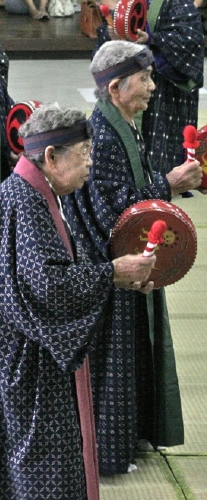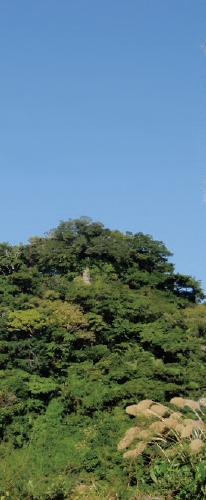
The Elegant, Flowering Fabrics from the Ryukyu Dynasty
- The only subtropical region in Japan, Okinawa was once the hub of trade in Asia. Through such international relations, the unique culture of its royal dynasties was born. This culture was one that abandoned conflicts and struggles, and held peace and elegance in the highest esteem.
- Ryukyuan culture produced numerous arts and crafts of great splendor and these works of eternal beauty have been handed down through the generations. The Hanaori is one of those treasures that saw its blossoming during Okinawa’s glorious past, the age of great trade during the Ryukyu Dynasty era.
Chibana, the Land of Hanaori
- Just as the Ryukyu Kingdom was the hub of Asia, Chibana, the land of Hanaori was also located in the heart of the Kingdom. From the Dynasty era to the present day, Chibana has prospered as a key point of traffic and in past ages, as a strategic point of defense in protecting the royal government in Shuri.
- Because of these factors, the techniques of the historic art of Hanaori have continued to be handed down in Chibana, making it a home to this distinctive woven fabric
History of Chibana-Hanaori
- The traditional art of Chibana-Hanaori has been handed down through the generations since the 18th century, mainly in the Chibana and Noborikawa areas of the former Misato village (present day Okinawa city). Over the ages, the Chibana-Hanaori has been cherished by locals. Special costumes made of these fabrics are worn during traditional festivities such as the Uma-harashii, a horse-racing festival performed by men which is held on August 14th of the lunar calendar, and the Usu-deku, an Okinawan term for usu daiko (a drum made from a traditional wooden mortar that was used to grind rice and other grains), and which is a festival performed by women who pray for prosperity and a good harvest on August 15th of the lunar calendar.
- Today, centuries after its birth, the elegant petals of the Chibana-Hanaori are beginning to unfold, revealing its new, blossoming beauty.
The Hand-Woven Flowers are Gifts for the Gods
- Usu-deku is a festival that takes place in the Chibana area along with other regions in Okinawa. This traditional event is performed by women and dances are dedicated to the gods along with prayers for prosperity and a good harvest.
- The dedicative dances take place at the Chibana community center on August 15th of the lunar calendar, with participants donning kimonos made with Chibana-Hanaori.
- Throughout the year, the special Usu-deku costumes are carefully stored but on the date of the traditional event, the Usu-deku drummers dressed in costumes called watajin and dujin perform their special songs and dances. The songs and dances are accompanied by the beat of the Usu-deku drums, and are performed in two halves, with six songs per half, and a total of 12 songs.
- The Usu-deku festivities allow us to experience the rituals of ages past and to appreciate the history of Hanaori, both of which are deeply rooted in the Chibana area.
The Characteristics of Chibana-Hanaori
- The unique characteristics of the Chibana-Hanaori are in its Tate-uki Hanaori and Nui-tori Hanaori designs. The Tate-uki Hanaori has vertical designs that are embossed in sequence, whereas the Nui-tori Hanaori is similar to that of embroideries where the designs are made of embossed threading. The Chibana-Hanaori may be dyed with Ryukyu indigo with kasuri splash patterns on a navy blue background, or embossed designs combined with checkered patterns.
- Distinctive styles of Chibana-Hanaori are preserved that utilize traditional techniques. These use cotton threading in embossed designs, which are combined with fabrics that are woven with white and red threading. Another unique style involves silk threads that are dyed with natural plant extracts or are textured and made into colorful items that are ideal for modern lifestyles.
Varieties and Designs of Textile
Tate-uki Hanaori:
- Mon-ito threading is added vertically on a plain weave textile.
Nui-tori Hanaori:
- Hana-ito threading is woven into a plain weave textile.
Yoko-uki Hanaori:
- Mon-it threading is added horizontally on a plain weave textile.
Hanaori with Kasuri Weave:
- A design known as the Ten-hana.
※知花花織振興を目指す沖縄市は花織の担い手を育成しています。
半年間の研修修了後に組合のメンバーとなり、知花花織事業所協同組合にて、日々製品作りに取り組んでいます。




